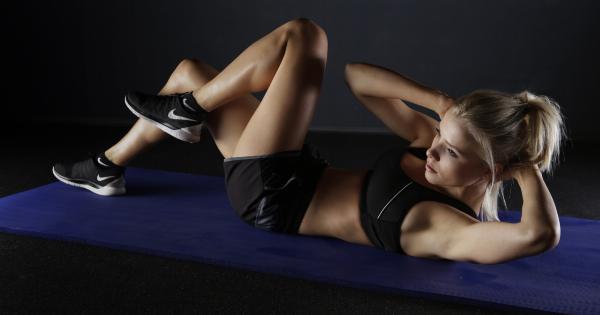Diabetes is a chronic condition that affects millions of people worldwide.
It is characterized by high blood sugar levels, either due to the body’s inability to produce enough insulin (Type 1 diabetes) or the body’s resistance to insulin (Type 2 diabetes). While medication and lifestyle changes are typically the primary treatment methods for diabetes, incorporating regular physical activity, such as walking, into your daily routine can significantly help manage and even beat diabetes.
The Benefits of Walking for Diabetes
Walking offers numerous benefits for individuals with diabetes. It helps improve insulin sensitivity, which means your cells become more responsive to insulin. As a result, your body can utilize glucose more effectively, thus reducing blood sugar levels.
Additionally, regular physical activity like walking can help you maintain a healthy weight, lower blood pressure, boost cardiovascular health, and reduce the risk of complications associated with diabetes.
How Walking Affects Blood Sugar Levels
One of the primary concerns for individuals with diabetes is managing their blood sugar levels. Walking can play a significant role in regulating these levels. When you engage in physical activity, your muscles use glucose as fuel.
This helps lower blood sugar levels by clearing excess glucose from the bloodstream. Furthermore, walking can help your body become more insulin sensitive, allowing glucose to enter cells effectively and reducing insulin resistance.
Developing a Walking Routine
Creating a walking routine is a simple and accessible way to incorporate physical activity into your lifestyle. It’s important to start at a comfortable pace and gradually increase the duration and intensity of your walks.
Aim for at least 150 minutes of moderate-intensity aerobic activity, such as brisk walking, spread across the week. Splitting your walking sessions into multiple shorter sessions can also be effective.
Wearing Proper Footwear
When embarking on a walking routine, it’s crucial to wear supportive and comfortable footwear. Invest in a good pair of walking shoes that fit well and provide sufficient arch support.
Ill-fitting or unsupportive shoes can lead to foot pain, blisters, and other discomforts that may deter you from sticking to your walking routine.
Exploring Different Walking Routes
Walking need not be limited to a treadmill or a specific route. Take advantage of your surroundings by exploring different walking routes. This can help keep your walks interesting and motivate you to continue your routine.
Whether it’s a local park, a nature trail, or even a lively urban area, varying your walking environment can make your exercise sessions more enjoyable.
Walking with a Companion
Walking with a friend, family member, or even a pet can make the activity more enjoyable and sociable. Having a companion can provide motivation, increase accountability, and make your walking routine more enjoyable.
Sharing this experience with someone can also help alleviate any boredom that may arise from walking alone.
Staying Safe While Walking
While walking is generally a safe activity, it’s important to take necessary precautions to ensure your wellbeing. Wear reflective clothing if you’re walking during low-light conditions or at night.
If you have diabetes, always carry a form of identification indicating your condition, as well as any necessary medication or supplies. It’s also advisable to check your blood sugar levels before and after walking to monitor any fluctuations.
Combining Walking with Strength Training
While walking alone offers significant benefits for managing diabetes, combining it with strength training exercises can further enhance your results.
Strength training helps build muscle, which can improve insulin sensitivity, aid in weight management, and enhance overall physical fitness. Include activities like resistance training, bodyweight exercises, or yoga alongside your walking routine for optimal results.
Monitoring Your Progress
Keeping track of your progress is crucial for staying motivated and reaching your goals. Use a pedometer or a smartphone app to monitor the distance, steps taken, and calories burned during your walks.
Additionally, regularly check your blood sugar levels and note any improvements or changes. Celebrate small milestones and use them as motivation to continue with your walking routine.
Consulting with Your Healthcare Provider
Before starting any new exercise regimen, especially if you have diabetes or other underlying health conditions, it’s important to consult with your healthcare provider.
They can provide personalized advice, consider your specific needs, and help you determine the most suitable walking routine for your situation.
Incorporating Walking as a Daily Habit
Ultimately, the key to beating diabetes through walking is consistency and making it a lifelong habit. Aim to establish walking as a daily activity by incorporating it into your routine and making it a priority.
Remember that any physical activity, no matter how small, can contribute to better diabetes management and improved overall health.































